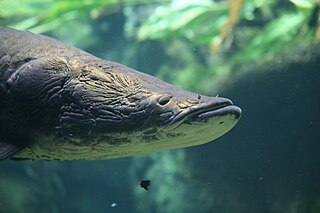
Osteoglossomorpha is a group of bony fish in the Teleostei.

RMIT University, officially the Royal Melbourne Institute of Technology, is a public research university in Melbourne, Australia.

A rubber band is a loop of rubber, usually ring or oval shaped, and commonly used to hold multiple objects together. The rubber band was patented in England on March 17, 1845, by Stephen Perry. Most rubber bands are manufactured out of natural rubber as well as for latex free rubber bands or, especially at larger sizes, an elastomer, and are sold in a variety of sizes.

Rimfire ammunition is a type of firearm metallic cartridge whose primer is located within a hollow circumferential rim protruding from the base of its casing. When fired, the gun's firing pin will strike and crush the rim against the edge of the barrel breech, sparking the primer compound within the rim, and in turn ignite the propellant within the case. Invented in 1845, by Louis-Nicolas Flobert, the first rimfire metallic cartridge was the .22 BB Cap cartridge, which consisted of a percussion cap with a bullet attached to the top. While many other different cartridge priming methods have been tried since the mid-19th century onwards, such as pinfire, only small caliber rimfire and centerfire cartridges have survived to the present day with regular usage. The .22 Long Rifle rimfire cartridge, introduced in 1887, is by far the most common ammunition in the world today in terms of units sold.
The Laws of the Game are the codified rules of association football. The laws mention the number of players a team should have, the game length, the size of the field and ball, the type and nature of fouls that referees may penalise, the offside law, and many other laws that define the sport. During a match, it is the task of the referee to interpret and enforce the Laws of the Game.
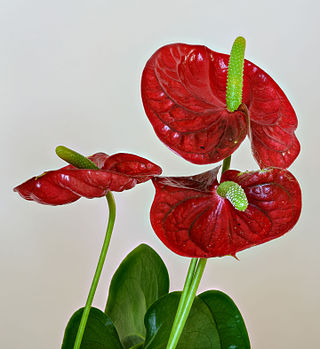
Anthurium is a genus of about 1,000 species of flowering plants, the largest genus of the arum family, Araceae. General common names include anthurium, tailflower, flamingo flower, and laceleaf.

Bartın is a city in northern Turkey, near the Black Sea. It is the seat of Bartın Province and Bartın District. Its population is 81,692 (2021).

Cueva del Milodón Natural Monument is a Natural Monument located in the Chilean Patagonia, 24 km (15 mi) northwest of Puerto Natales and 270 km (168 mi) north of Punta Arenas.
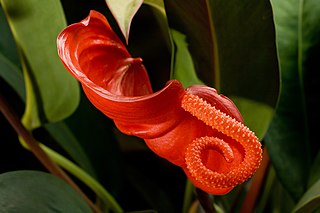
Anthurium sect. Porphyrochitonium is a section within the genus Anthurium, which comprises about 250 species. Plants of this section are typified by Anthurium scherzerianum. The most definitive feature of the section is a large, bright red spathe. Other than this distinction, it shares nearly every other characteristic with section Urospadix. Anthuriums that belong to Porphyrochitonium are generally delicate in appearance, bearing slender stems with short internodes and elongated, non-cordate leaf blades which are glandular-punctate on at least one surface. There are one or more well-defined collective veins, and the berries generally have three seeds.
Digitinervium is a section of the genus Anthurium. It is a small, natural section consisting of plants with thick leaf blades, glandular-punctate on the lower surfaces, with well-defined basal veins, normally occurring in pairs and extending past the middle of the blade. Tertiary veins are fine, closely packed, and parallel. The section is distributed across a limited range consisting of the Andes of northwestern South America, and the mountains of Costa Rica and Panama.

Pachyneurium is a section within the genus Anthurium. It is the largest section, containing the "birdsnest" Anthuriums. Plants of the section are terrestrial, with a rosette growth habit of dense, deeply rooted stems, and long lanceolate to oblanceolate leaves. Leaves are borne on short petioles and often have waved margins. The most notable characteristic is in the rolling of new leaves. Anthurium of all other sections are rolled in a simple spiral, resembling a conch shell; those of Pachyneurium are rolled in two opposite spirals towards the central rib of the leaf.

A hand net, also called a scoop net, is a handheld fishing net or meshed basket used to capture and retrieve objects from water, somewhat in the manner of a sieve. It is distinguished from other fishing nets in that the net or mesh is supported by a rigid circular or polygonal frame, which may or may not be mounted to the end of a handle.

Anthurium andraeanum is a flowering plant species in the family Araceae that is native to Colombia and Ecuador. It is a winner of the Royal Horticultural Society's Award of Garden Merit.

Peperomia wheeleri is a rare species of flowering plant in the pepper family known by the common name Wheeler's peperomia. It is endemic to Puerto Rico, where it is known only from the island of Culebra. It has become rare because of deforestation and grazing by livestock. It is a federally listed endangered species of the United States.
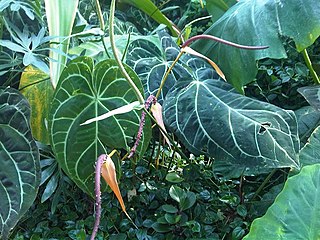
Anthurium crystallinum is a species of flowering plant in the family Araceae, native to rainforest margins in Central and South America, from Panamá to Perú. Growing to around 90 cm (35 in) tall and broad, A. crystallinum is an epiphytic perennial, characterised by large, velvety, ovate to heart-shaped leaves with prominent white veining; their blooms are somewhat visually insignificant inflorescences, with green spathes and pale green spadices, appearing throughout the year.
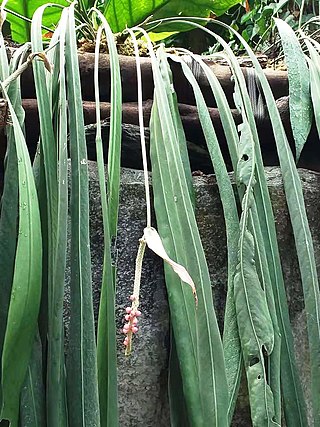
Anthurium vittariifolium is a species of flowering plant in the genus Anthurium native to the Amazon basin; southeast Colombia, Ecuador, Peru, and northern Brazil. With its long, pendulous leaves that can reach 2.4 m (8 ft), it is among those commonly known as "strap-leaved" anthuriums. It grows as an epiphyte at lower elevations of tropical moist forests, and is a member of the section Leptanthurium along with Anthurium gracile.

Anthurium podophyllum is a species of plant in the genus Anthurium native to coastal areas of the Mexican states of Veracruz and Oaxaca. A terrestrial species, it grows in tropical forest understories in seasonally dry areas. It is named for its palmate leaves that somewhat resemble plants in the (unrelated) genus Podophyllum, and which have many subdivisions. It is related to other terrestrial Anthurium with similar leaf morphology in the section Schizoplacium, such as Anthurium pedoradiatum, and produces orange berries.

Anthurium argyrostachyum is a species of plant in the genus Anthurium native to Ecuador and Colombia. Growing as a small shrub or an epiphyte, it is best recognized by its foliage that has triangular or arrowhead-like shape, a long central lobe, and parallel veins. It is a member of the section Polyneurium, and is thus related to Anthurium corrugatum, Anthurium panduriforme, and others that share its parallel venation and other characteristics.

Anthurium dwyeri is a species of plant in the genus Anthurium native from Costa Rica to the Chocó Department of Colombia. Named in honor of the botanist Dr John D. Dwyer, it has no known close relatives but is a member of the section Porphyrochitonium. An epiphyte, it is most easily recognizable by its leathery, oblong to elliptical leaves that are 24–40 centimetres (9.4–15.7 in) long and grow on triangular stems.

Anthurium wendlingeri is a species of plant in the genus Anthurium found in Central and South America, from southeast Nicaragua to northwest Colombia. It grows in wet tropical habitats as an epiphytic shrub with long, pendant leaves up to 7 feet (2.1 m) long that can have a slightly velvety appearance.

















